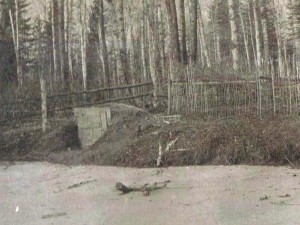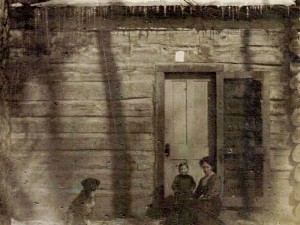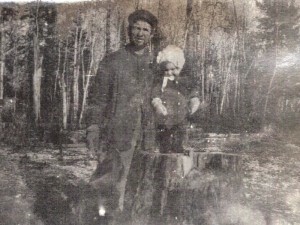 Years ago, long before refrigeration was safe to use, most people had a more primitive way to keep foods fresh or frozen. I say that this was before refrigeration was safe to use, because mechanical refrigeration was actually invented in 1748 by William Cullen and was demonstrated at the University of Glasgow. This version was not used for any practical purpose, however. In 1805, an American inventor named Oliver Evans designed the first refrigeration machine, and the first person to make a practical refrigerating machine was Jacob Perkins in 1834, using Ether in a vapor compression cycle. American physician, John Gorrie, built a refrigerator based on Oliver Evans’ design in 1844 which he used to make ice to cool the air for his yellow fever patients. German engineer Carl von Linden, patented not a refrigerator but the process of liquefying gas in 1876 that is part of basic refrigeration technology. Refrigerators in the late 1800s and up until 1929 used toxic gasses, such as ammonia, methyl chloride, and sulfur dioxide as refrigerants, which were responsible for several fatal accidents in the 1920s. I suppose the cost and the dangers of these early models were the main reasons that people continued to used the old fashioned version.
Years ago, long before refrigeration was safe to use, most people had a more primitive way to keep foods fresh or frozen. I say that this was before refrigeration was safe to use, because mechanical refrigeration was actually invented in 1748 by William Cullen and was demonstrated at the University of Glasgow. This version was not used for any practical purpose, however. In 1805, an American inventor named Oliver Evans designed the first refrigeration machine, and the first person to make a practical refrigerating machine was Jacob Perkins in 1834, using Ether in a vapor compression cycle. American physician, John Gorrie, built a refrigerator based on Oliver Evans’ design in 1844 which he used to make ice to cool the air for his yellow fever patients. German engineer Carl von Linden, patented not a refrigerator but the process of liquefying gas in 1876 that is part of basic refrigeration technology. Refrigerators in the late 1800s and up until 1929 used toxic gasses, such as ammonia, methyl chloride, and sulfur dioxide as refrigerants, which were responsible for several fatal accidents in the 1920s. I suppose the cost and the dangers of these early models were the main reasons that people continued to used the old fashioned version.
The old fashioned way to keep foods fresh or frozen, involved using ice and snow, which they would bring in from the mountains, or use what was on the ground, if it was available. They would dig a cellar in the ground,  and line it with wood or straw. Then they packed it with snow and ice, and the food was placed in the cellar. It was this type of refrigeration system that my grandparents, Allen and Anna Spencer, were using at the time my Aunt Laura Fredrick was a very little girl in about 1913. My grandparents were living in a wooded area in northern Minnesota near American Falls. Grandpa was working in the lumber business at that time.
and line it with wood or straw. Then they packed it with snow and ice, and the food was placed in the cellar. It was this type of refrigeration system that my grandparents, Allen and Anna Spencer, were using at the time my Aunt Laura Fredrick was a very little girl in about 1913. My grandparents were living in a wooded area in northern Minnesota near American Falls. Grandpa was working in the lumber business at that time.
According to my Uncle Bill Spencer, who was their second child, the cellar was probably not needed much in the long winter months, because the house stayed pretty cold up there anyway. I’m sure that they had wood for a fire, but then again, I suppose that everything they burned, was something that could not bring in money. Also, they lived in a log cabin, that was apparently not very well built, or at least the spaces in between the logs were not really well packed with mud to keep the cold winter air on the outside of the house, where it belonged.
I’m not sure how far the cellar was from the house, because, I can’t see the house in the picture, so it might have been a little way from the house, or the picture might have been taken from the house. Either way, getting food from the cellar was a bit of a process, because you don’t want to upset the cooling process by removing the straw too often, as it was part of what kept the ice and snow from melting.
 I can’t say when my grandparents got their first real refrigerator, but I expect that like many people of that time, they were a little bit leery of the early refrigerators, after hearing about people dying because the gasses leaked out of the unit. I suppose it was the price people paid to be able to use some of the early inventions, but many people felt that the price was too high, so they waited until these new fangled gadgets were proven safe before they took a chance on them. And, I’m sure that like any new thing, they were pretty expensive early on too. The cellar would work just fine for now, and therefore, that is what my grandparents were using at that time in our family history. These days, we would be shocked at such a method of keeping food fresh.
I can’t say when my grandparents got their first real refrigerator, but I expect that like many people of that time, they were a little bit leery of the early refrigerators, after hearing about people dying because the gasses leaked out of the unit. I suppose it was the price people paid to be able to use some of the early inventions, but many people felt that the price was too high, so they waited until these new fangled gadgets were proven safe before they took a chance on them. And, I’m sure that like any new thing, they were pretty expensive early on too. The cellar would work just fine for now, and therefore, that is what my grandparents were using at that time in our family history. These days, we would be shocked at such a method of keeping food fresh.


2 Responses to Keeping It Cold